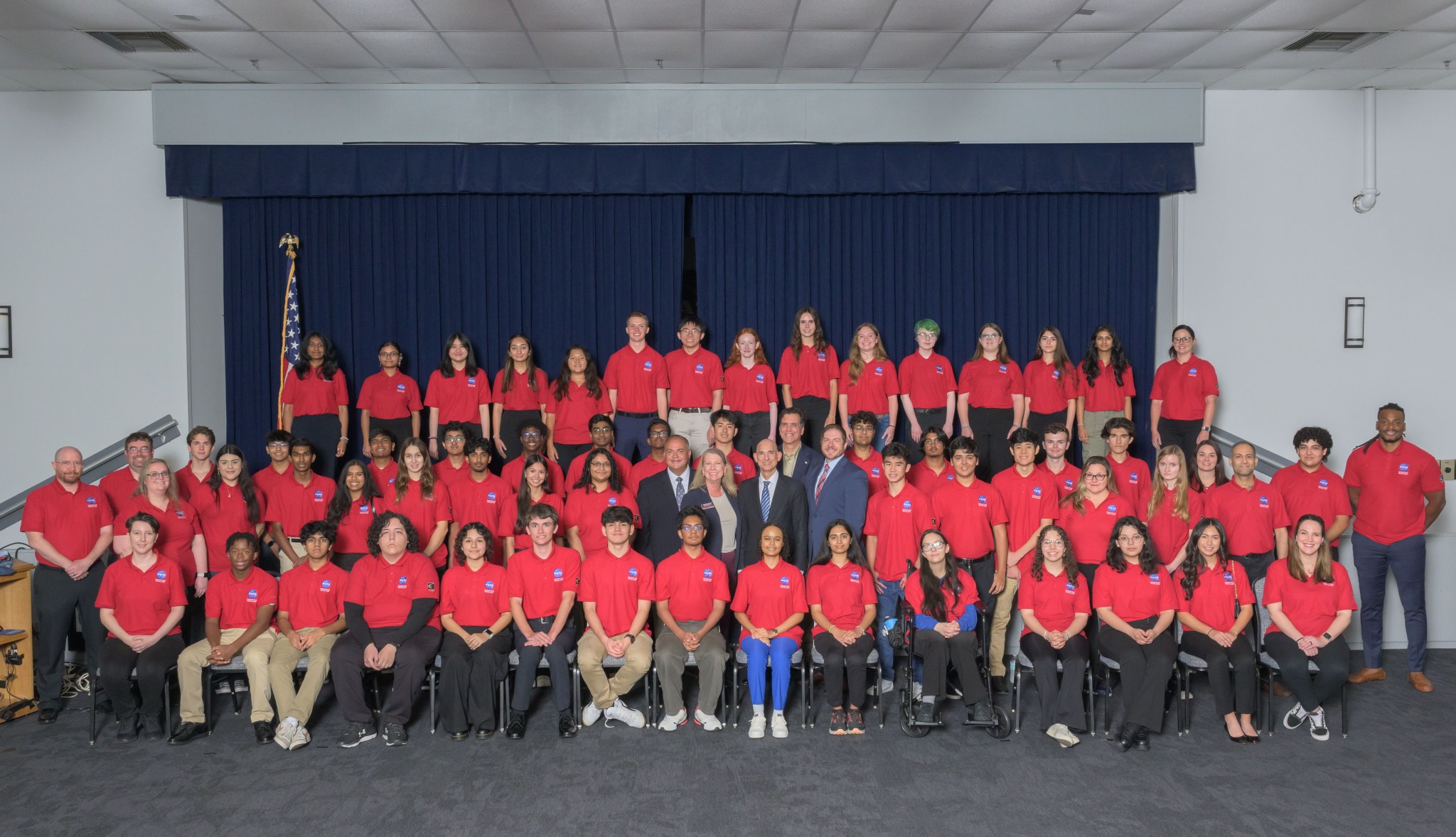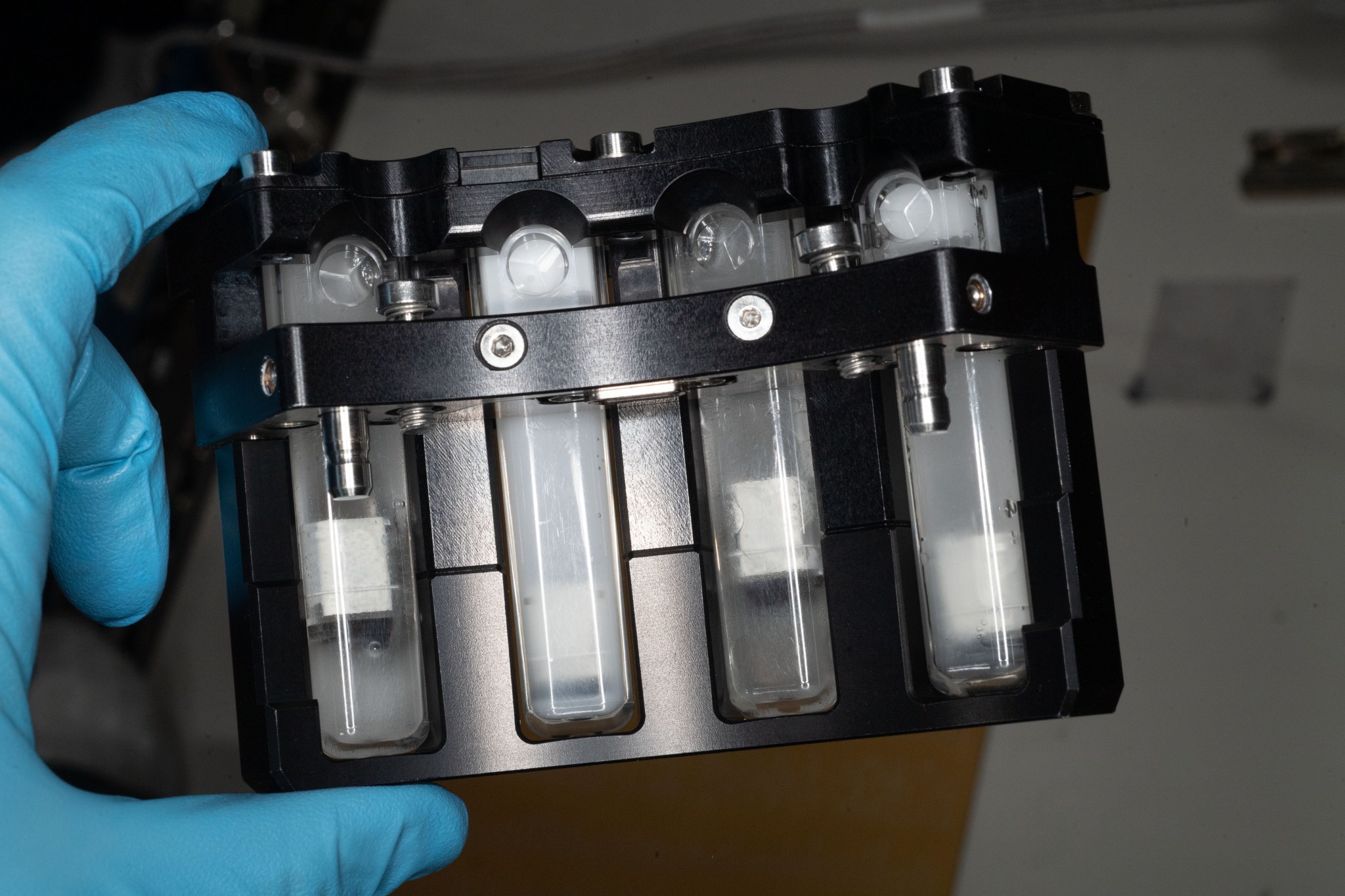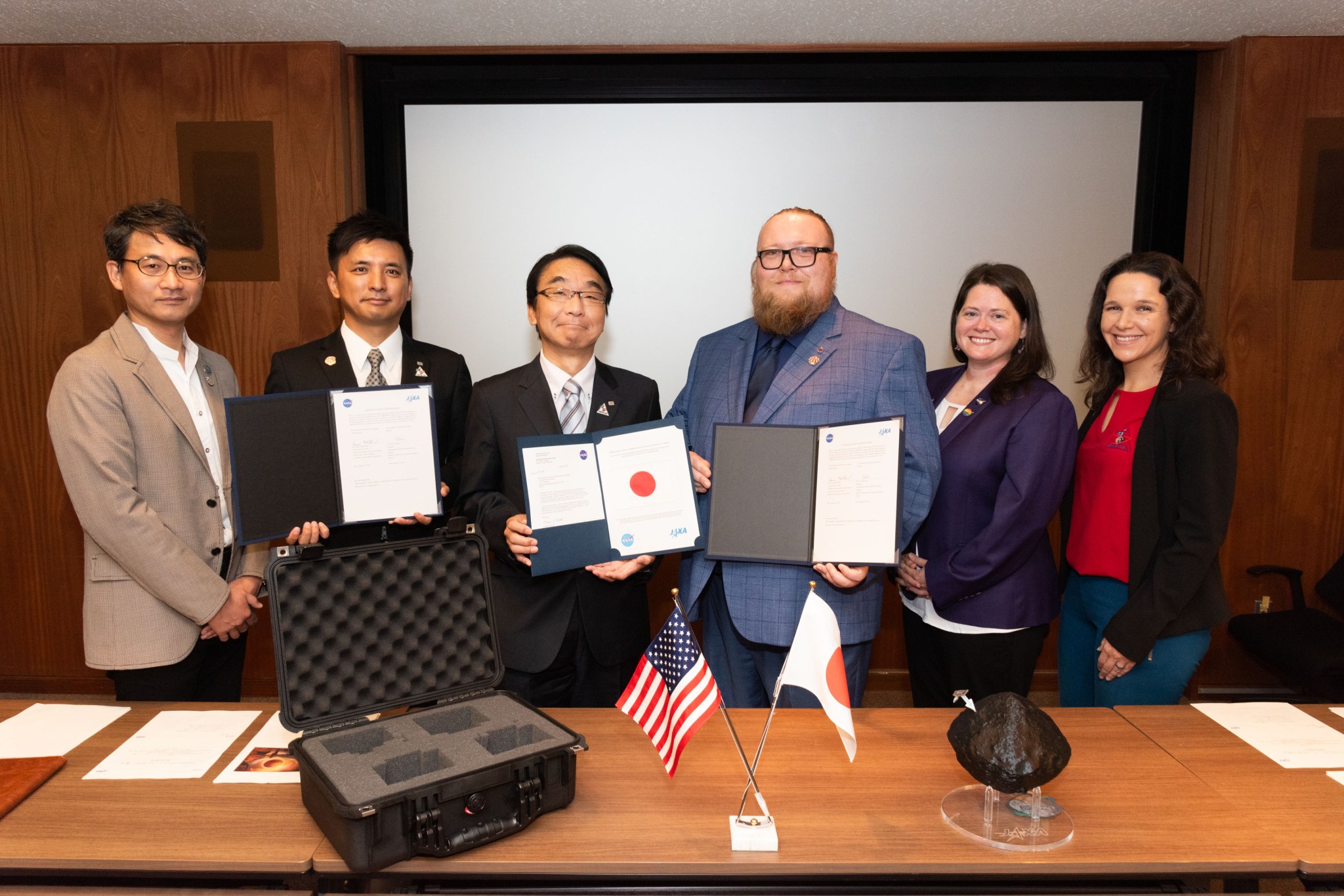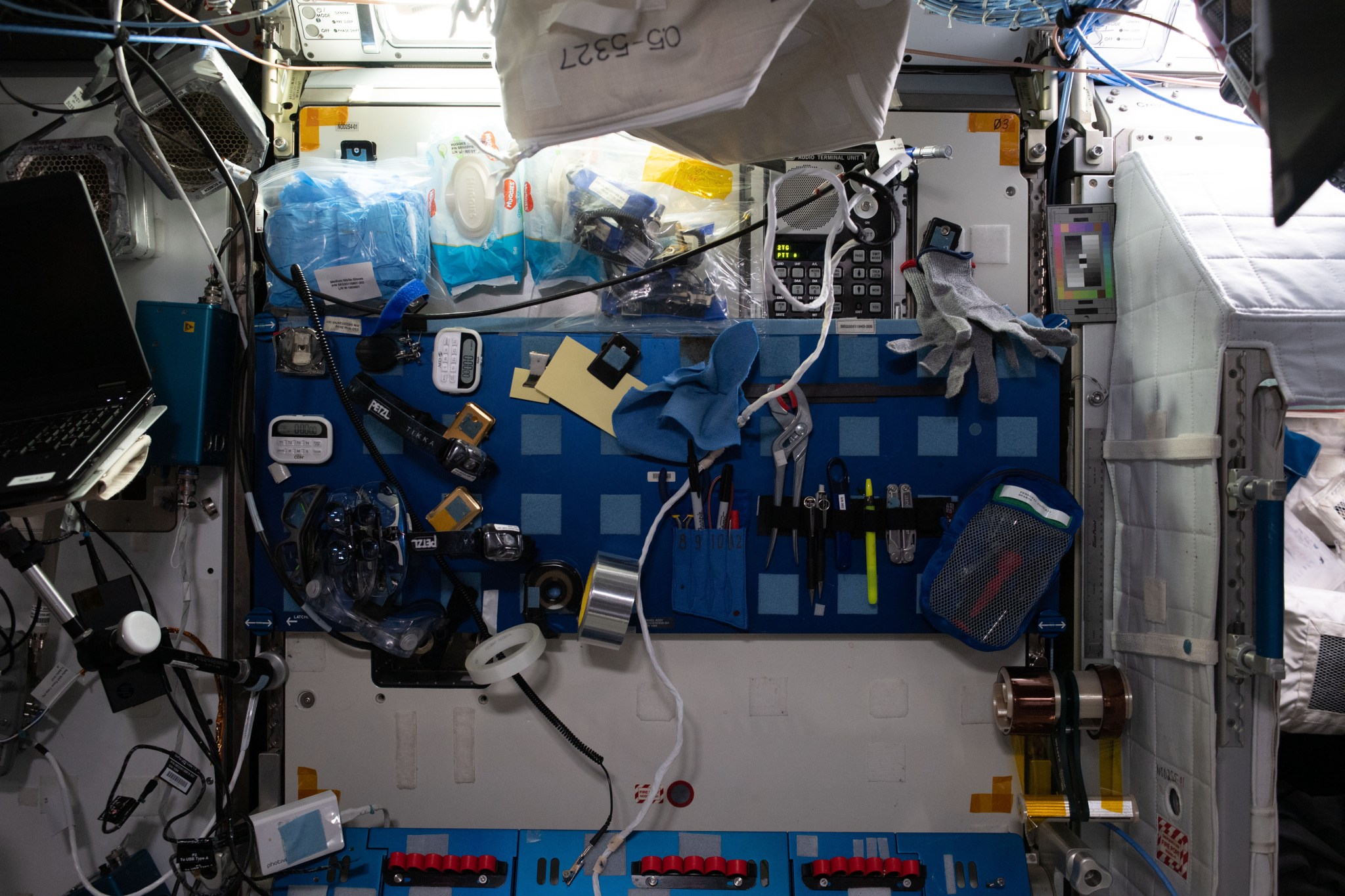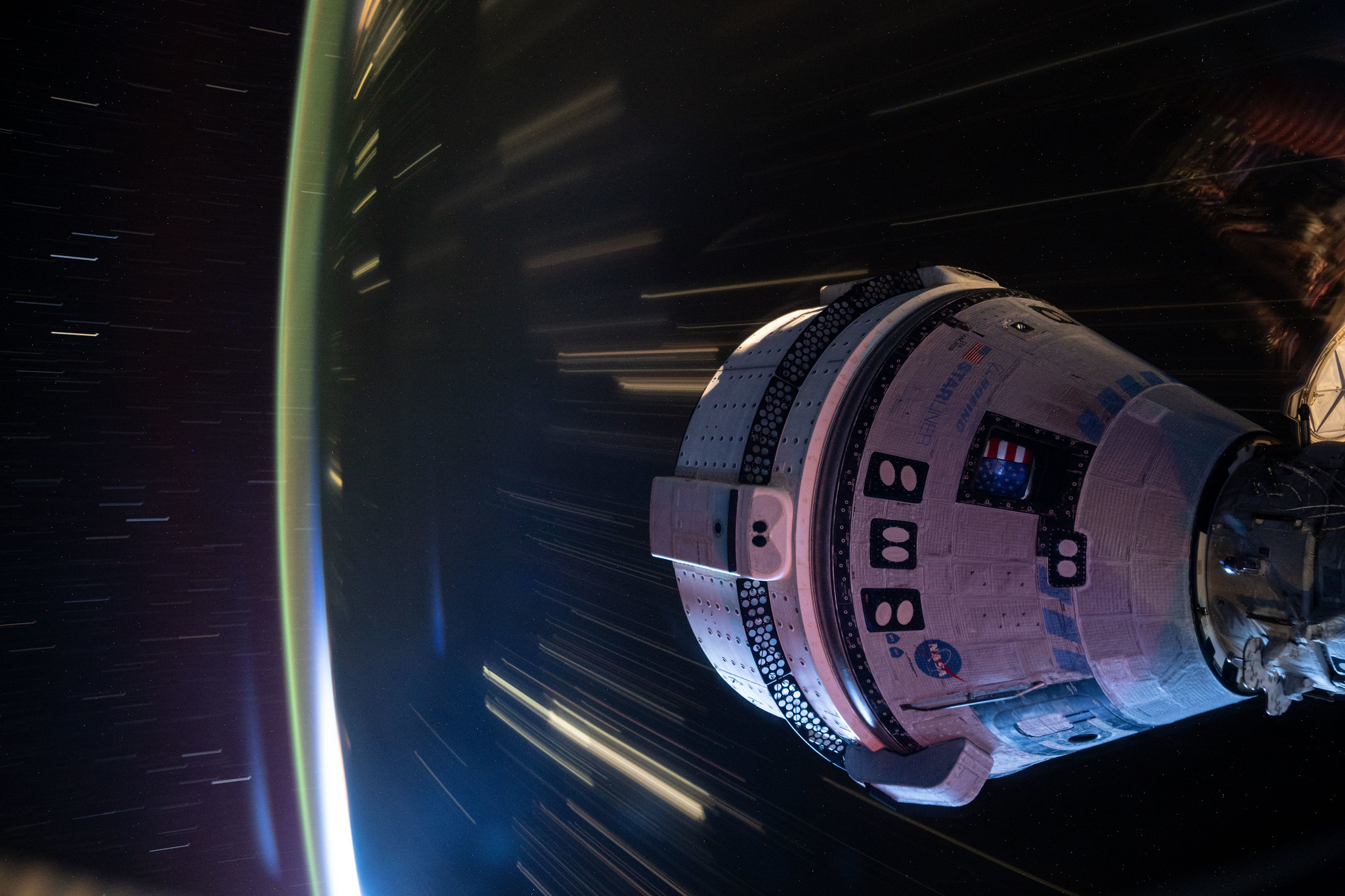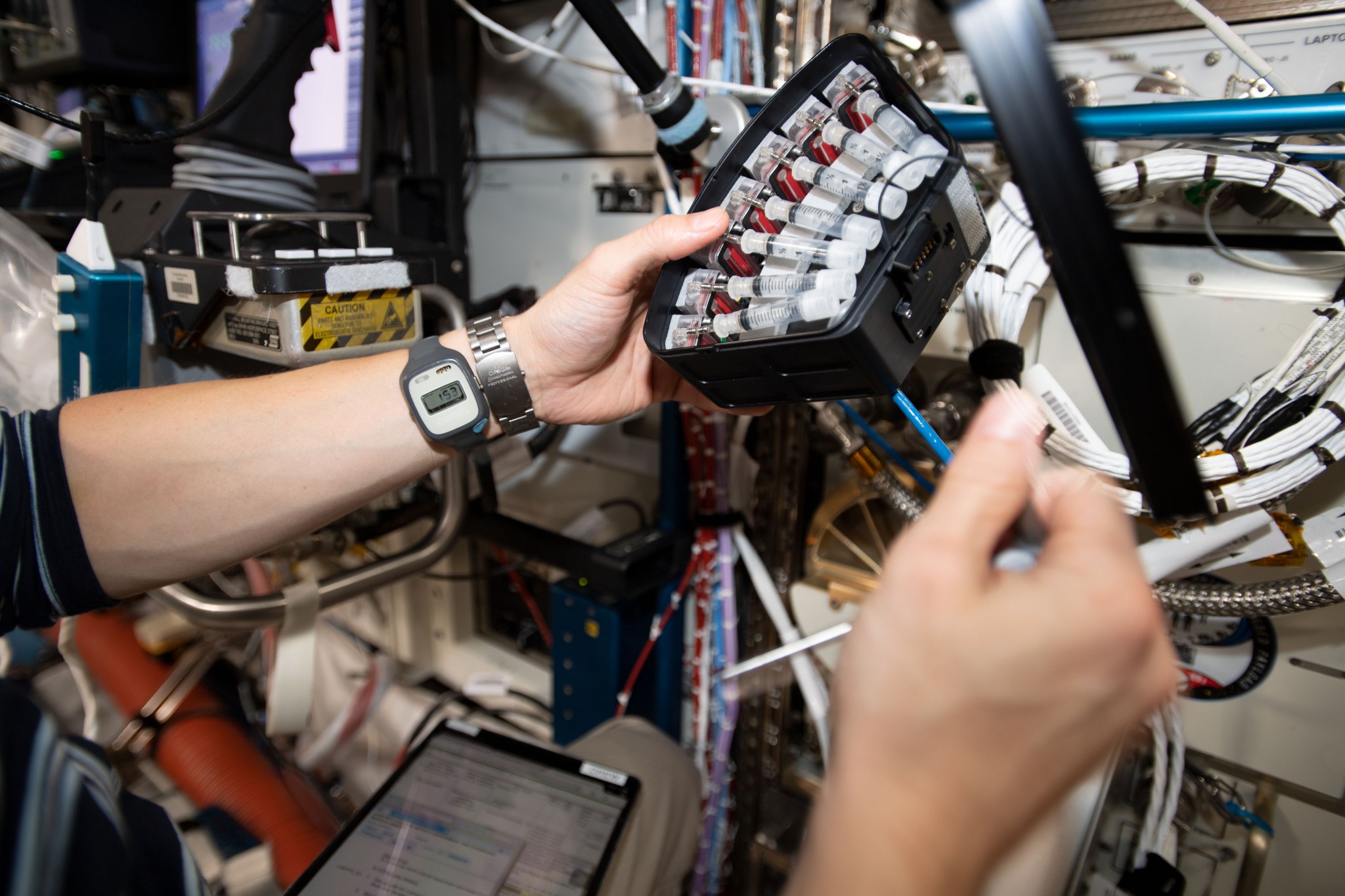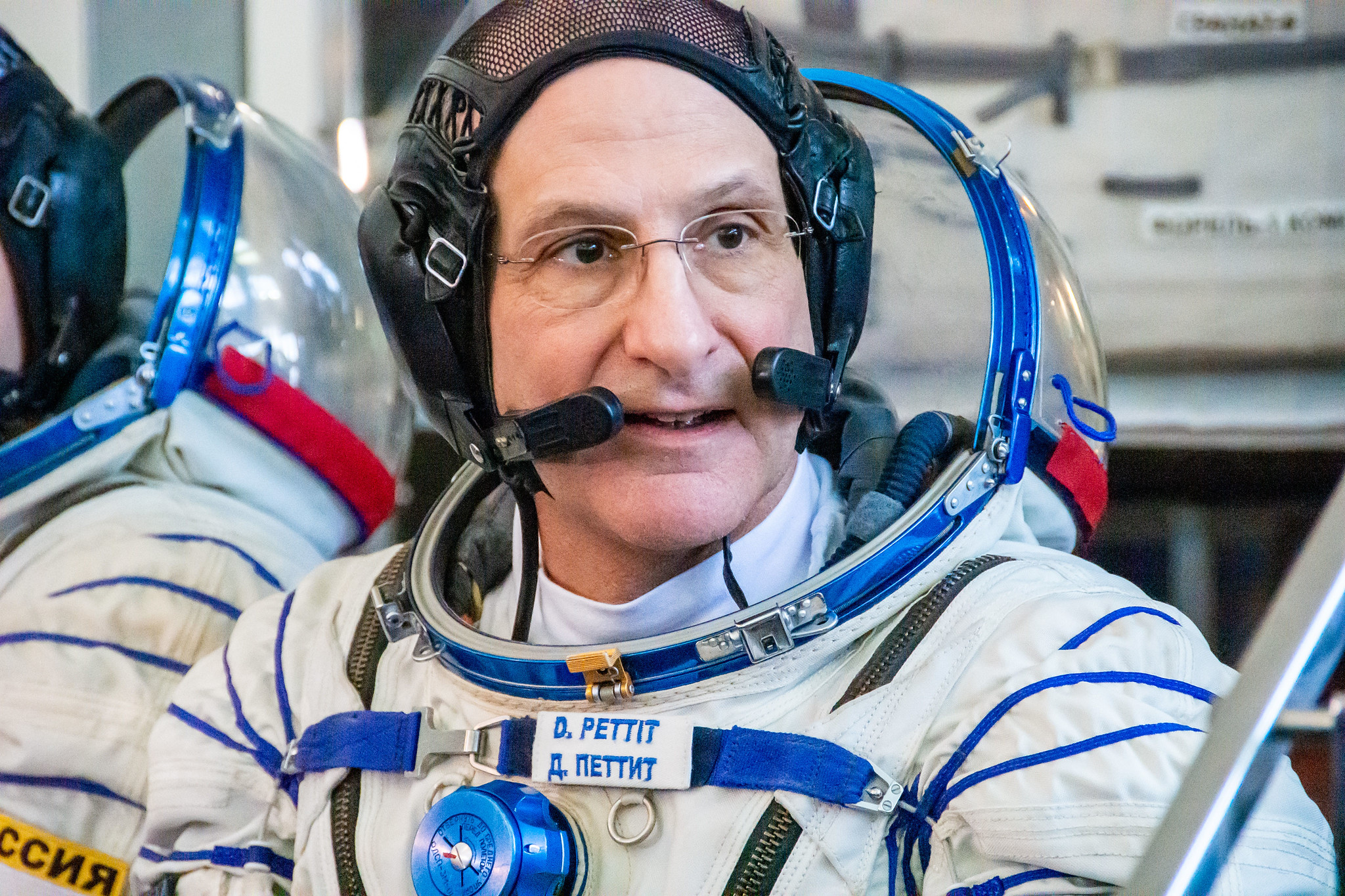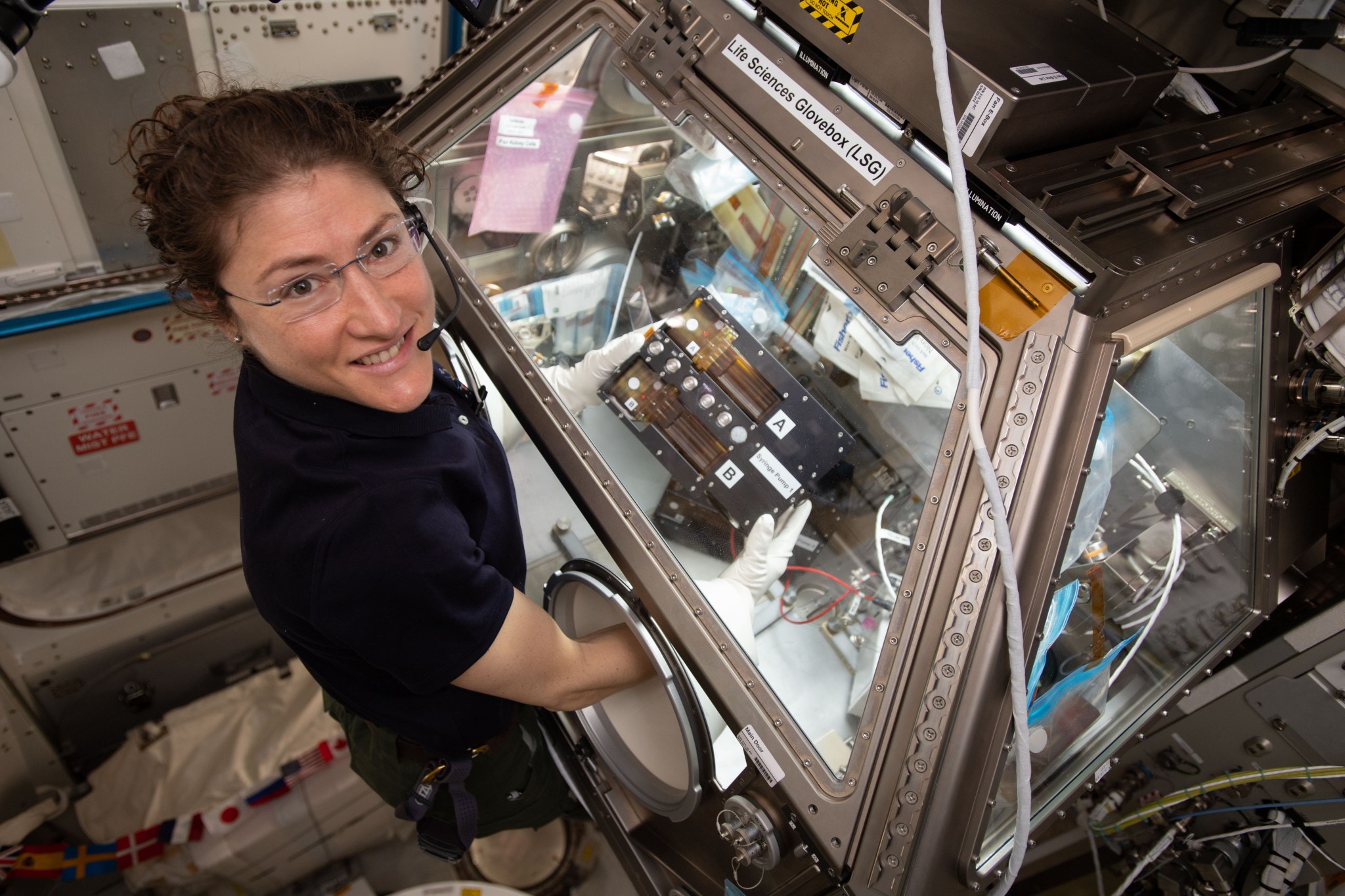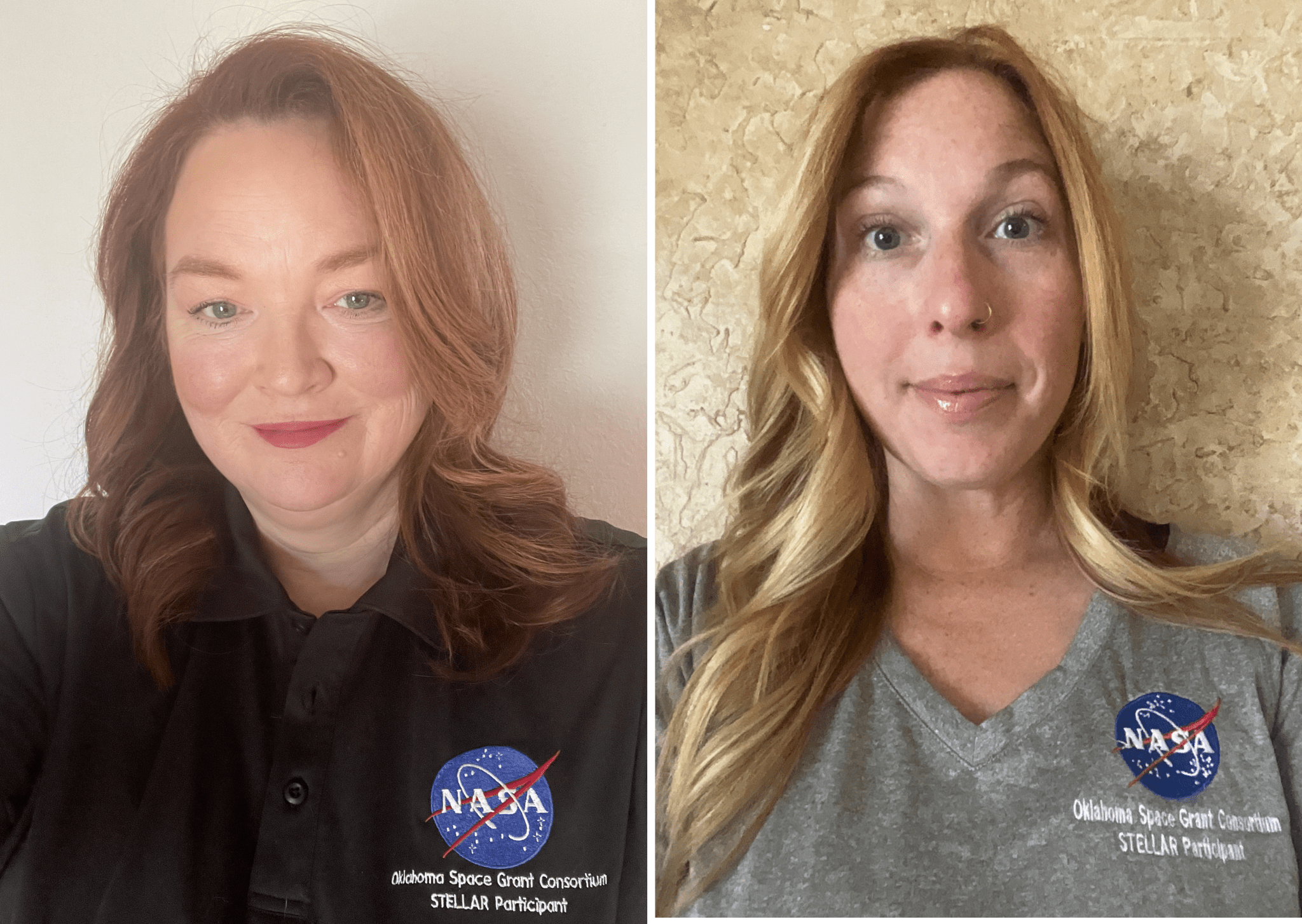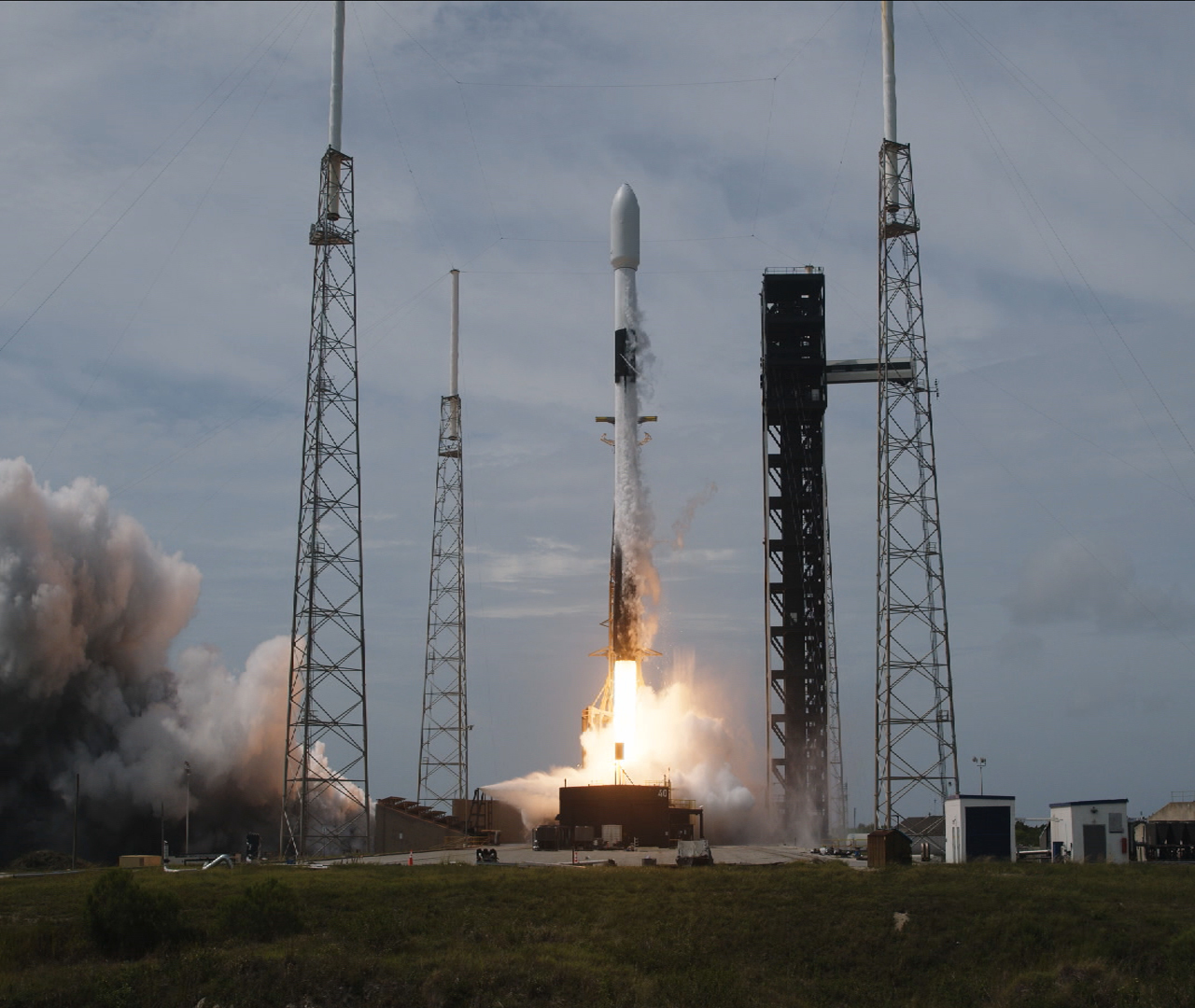For 25 years, the Office of STEM Engagement (OSTEM) at NASA’s Johnson Space Center has inspired and provided high school students across the state of Texas with NASA-focused learning experiences through the High School Aerospace Scholars (HAS) program. The OSTEM team celebrated the milestone on Monday, July 29 at Johnson’s Gilruth Center with poster sessions, special presentations, and a networking reception. Fifty-one students who participated in the 2024 High School Aerospace Scholars program were invited to NASA’s Johnson Space Center in Houston to participate in an on-site experience. NASA/James Blair…
Read MoreTag: Johnson Space Center
Station Science Top News: August 23, 2024
Researchers successfully produced cellulose from bacteria cultured on the International Space Station for four weeks. The bacteria used in the experiment, K. hansenii, is known to produce the highest amount of cellulose and could be considered for large-scale production in microgravity to support the development of materials used in construction, clothing, and the supply of energy. Ice Cubes Experiment Cube #4, #5- Kirara, a temperature-controlled module typically used for protein crystallization, was used here to incubate the target bacteria. Researchers developed a customized methodology that consisted of adjusting gas and…
Read MoreNASA Shares Asteroid Bennu Sample in Exchange with JAXA
As part of an asteroid sample exchange, NASA has transferred to JAXA (Japan Aerospace Exploration Agency) a portion of the asteroid Bennu sample collected by the agency’s OSIRIS-REx mission. The sample was officially handed over by NASA officials during a ceremony on Aug. 22 at JAXA’s Sagamihara, Japan, campus. The signature exchange for the Bennu sample transfer took place on Aug. 22, 2024, at JAXA’s (Japan Aerospace Exploration Agency) Institute of Space and Astronautical Science, Sagamihara Campus. JAXA This asteroid sample transfer follows the November 2021 exchange where JAXA transferred…
Read MoreStation Science Top News: August 16, 2024
Locations designed as a maintenance work area and an exercise area on the International Space Station are commonly used by crew members for stowage and body maintenance activities, respectively. These differences between intended and actual use demonstrate that systematic observation of material culture can help researchers identify how astronauts adapt to life in microgravity and support better design of future spacecraft and habitats. The first archaeological fieldwork in space, SQuARE examined the space station’s material culture – objects and built spaces and their symbolic and social meanings – and how these objects and spaces…
Read MoreNASA to Provide Crew Flight Test Status Update
Boeing’s Starliner spacecraft is pictured docked to the International Space Station. This long-duration photograph was taken at night from the orbital complex as it soared 258 miles above western China. Credit: NASA NASA will host a media teleconference at 1 p.m. EDT, Wednesday, Aug. 14, to provide an update on the agency’s Boeing Crew Flight Test. Mission managers continue to evaluate the Starliner spacecraft’s readiness in advance of decisional meetings no earlier than next week regarding the return of NASA astronauts Butch Wilmore and Suni Williams. Audio of the teleconference…
Read MoreStation Science Top News: August 9, 2024
Researchers tested a treatment on cartilage and bone tissue cultures subjected to compressive impact injury and found differences in the metabolites and proteins released by cells in space and on Earth along with partial improvement in both gravity conditions. The findings suggest the treatment is safe and could help ensure the health of crew members on future missions and patients on Earth. Astronauts have high rates of musculoskeletal injuries, and post-traumatic osteoarthritis from joint injuries is a major contributor to disability across all ages on the ground. MVP Cell-06 used cultures of human knee…
Read MoreNASA Hosts Astronaut Don Pettit Prelaunch Interviews
NASA astronaut Don Pettit during crew qualification exams at the Gagarin Cosmonaut Training Center. Credits: GCTC/Roscosmos NASA astronaut Don Pettit is available for limited interview opportunities beginning at 10 a.m. EDT, Friday, Aug. 16, to discuss his upcoming mission to the International Space Station in September. The virtual interviews will stream live on NASA+, NASA Television, the NASA app, and the agency’s website. Learn how to stream NASA+ through a variety of platforms including social media. Interested media must submit a request no later than 12 p.m., Thursday, Aug. 15,…
Read MoreStation Science Top News: August 2, 2024
Analyses suggest that microgravity does not significantly alter fundamental biochemical pathways in kidney cells, including metabolism of vitamin D. This finding could help researchers develop strategies to protect crew health on future missions and improve treatment of kidney-related diseases on Earth. Kidney Cells examined the effects of microgravity and other factors of space travel on kidney health. Previous reports suggested that changes in kidney cell metabolism of vitamin D plays a role in bone loss in microgravity, and this paper recommends additional study to determine if this most recent finding is consistent with extended (>6…
Read MoreWhen Teachers Become the Students: Educators Spend Summer Studying STEM Engagement at Johnson
The summer months are usually a time for teachers to take a break from the classroom and enjoy some well-earned rest. But at NASA’s Johnson Space Center in Houston, two experienced educators dedicated their summer vacations to learning how to enrich their students’ science, technology, engineering, and mathematics (STEM) education and inspire them to achieve their dreams. Johnson’s Office of STEM Engagement (OSTEM) welcomed Jerry “Denise” Dunn and Shawnda Folsom as full-time interns for the summer. Both women came to Johnson through the Oklahoma Space Grant Consortium, which not only…
Read MoreNASA Science, Cargo Launch on 21st Northrop Grumman Mission to Station
Northrop Grumman’s Cygnus spacecraft for the company’s 21st commercial resupply services mission for NASA launched on a SpaceX Falcon 9 rocket from Space Launch Complex 40 at Cape Canaveral Space Force Station in Florida. Credit: NASA Following a successful launch of NASA’s Northrop Grumman 21st commercial resupply mission, new scientific experiments and cargo for the agency are bound for the International Space Station. Northrop Grumman’s Cygnus spacecraft, carrying more than 8,200 pounds of supplies to the orbiting laboratory, lifted off at 11:02 a.m. EDT Sunday on a SpaceX Falcon 9…
Read More